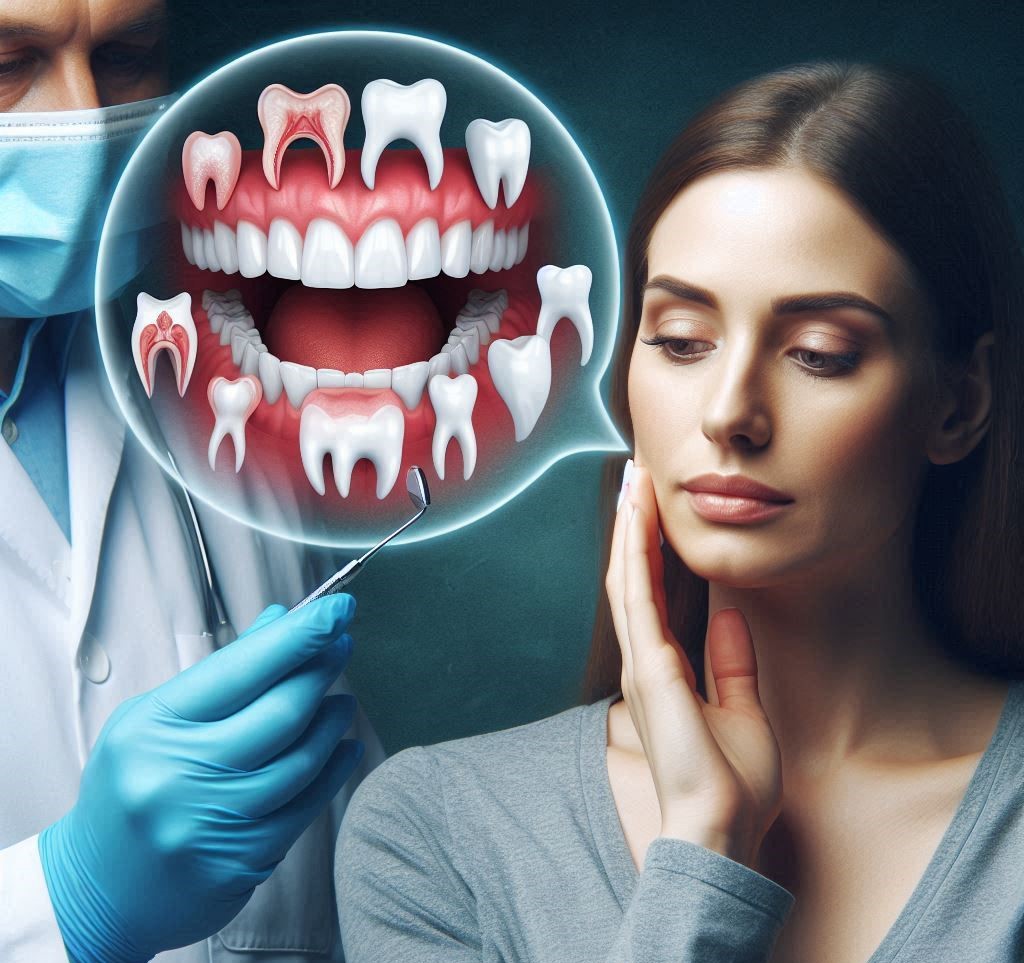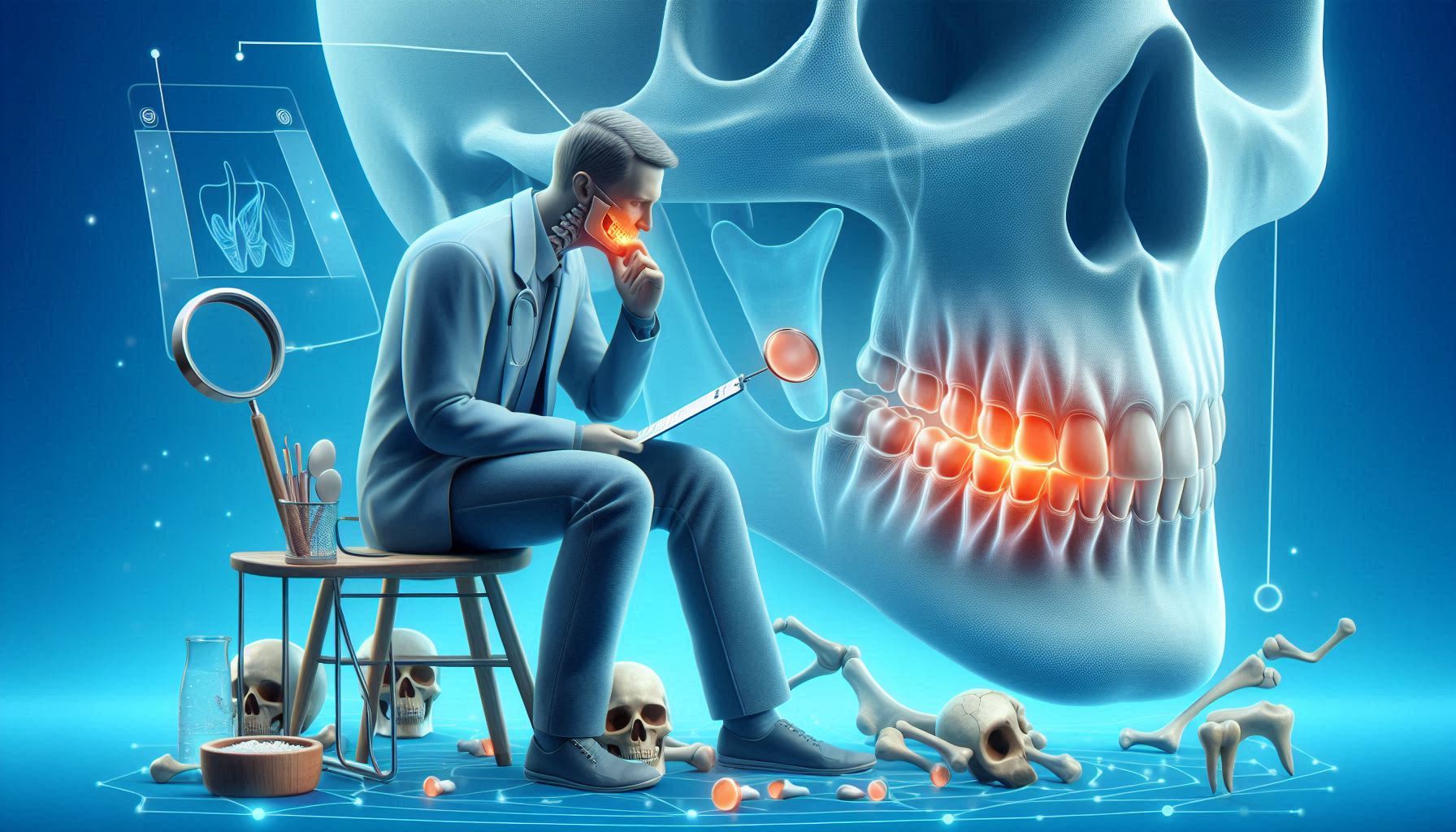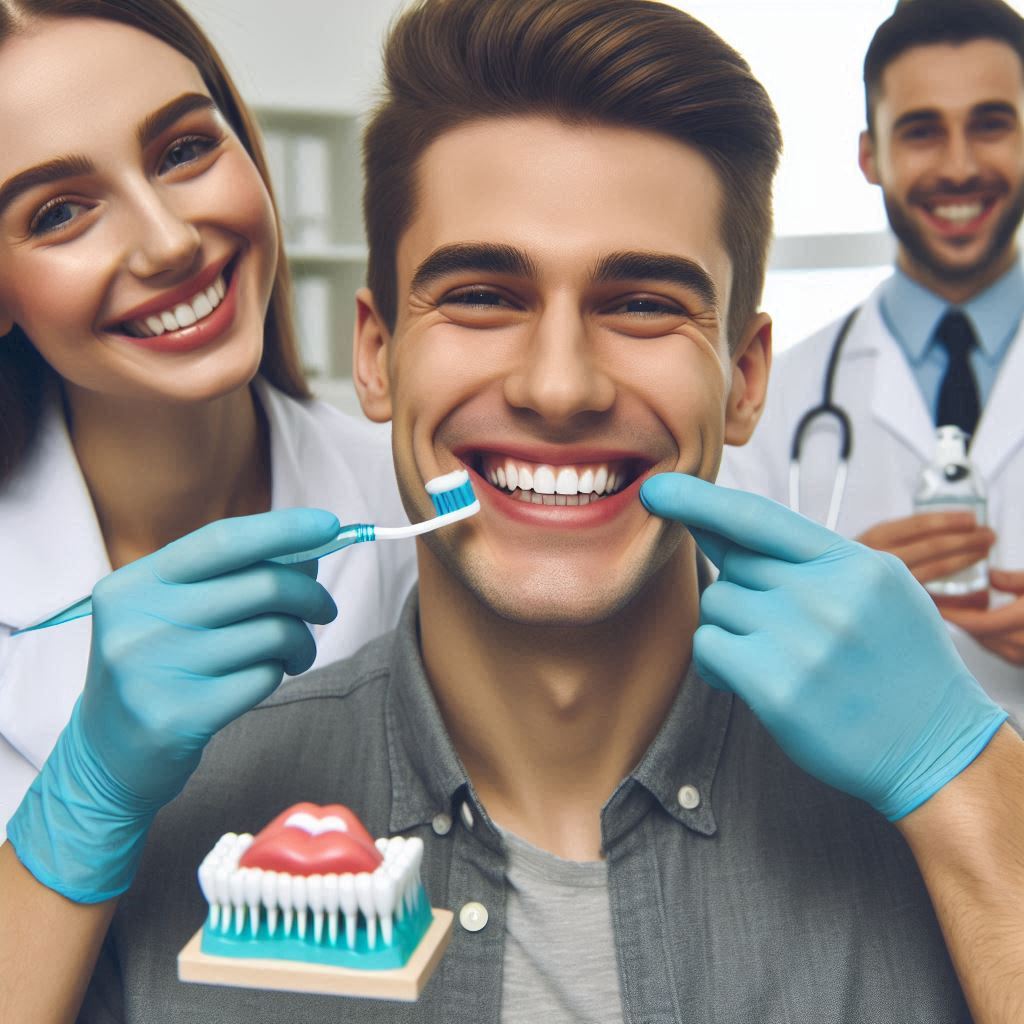Oral health is one of the cornerstones of overall well-being, yet it is often overlooked until a noticeable problem arises. While most people are aware of cavities and gum disease, there is a category of oral health issues that silently threaten our smiles—oral growths. These growths can develop gradually, often without immediate symptoms, leading many to dismiss or ignore early warning signs. Silent growths are not just cosmetic problems—they can impact both your health and quality of life.
The purpose of this article is to explore these silent growths, how they affect oral health, and what you can do to detect and prevent them before they become serious. From benign tumors to potentially deadly oral cancers, understanding the nature of these growths can help you maintain a healthy, beautiful smile for years to come.
Understanding Silent Growths
Silent growths are abnormal cell growths in the mouth that often do not exhibit noticeable symptoms in the early stages. Because these growths tend to grow slowly, many people don’t experience pain or discomfort, which is why they are called “silent.” However, if left undiagnosed or untreated, some of these growths can turn into serious health problems, including cancer.
Types of Silent Growths: Benign vs. Malignant
Silent growths in the mouth can be either benign (non-cancerous) or malignant (cancerous). Benign growths are usually slow-growing and less likely to spread to other parts of the body. Malignant growths, on the other hand, are cancerous and have the potential to spread, making early detection and treatment crucial.
Common Types of Silent Growths
Several types of silent growths can appear in the oral cavity, each with its own set of characteristics and implications for health.
- Oral Tumors and Cysts: Oral tumors are abnormal masses of tissue that can form in any part of the mouth, including the gums, tongue, lips, or palate. Cysts are fluid-filled sacs that can also develop in these areas. These growths may be painless and go unnoticed for months or even years.
- Fibromas: Fibromas are benign tumors made of fibrous or connective tissue. They can form in the gums or other areas of the mouth and usually appear as firm, painless lumps.
- Granulomas: A granuloma is a small, benign growth that can form on the gums or other soft tissues in the mouth. It is often caused by chronic irritation or inflammation.
- Adenomas: Adenomas are tumors that develop in the glandular tissues of the mouth. They are usually benign but can occasionally become malignant over time.
- Papillomas: These are wart-like growths caused by the human papillomavirus (HPV). Although they are typically benign, they can cause discomfort and may occasionally become cancerous if left untreated.
- Leukoplakia and Erythroplakia: Leukoplakia refers to white patches that develop on the tongue or inside of the mouth, while erythroplakia refers to red patches. Both conditions are considered precancerous and should be monitored closely by a dentist.
- Oral Cancer: Oral cancer is the most serious form of silent growths. It can occur anywhere in the mouth and is often linked to tobacco use, excessive alcohol consumption, and HPV infection. Early signs may include painless sores, lumps, or difficulty swallowing.
Early Detection: The Key to Prevention
The key to preventing the worst outcomes from oral growths is early detection. Regular dental checkups are essential for identifying growths before they become dangerous. Your dentist will look for early signs of tumors, cysts, or abnormal growths that may not yet be noticeable to you.
The Role of Imaging Technology
Dentists use advanced imaging techniques like X-rays, MRIs, and CT scans to detect growths that may not be visible during a routine oral examination. These tools help in identifying hidden or internal growths that could pose a risk to oral health.
Self-Examination
Regularly checking your mouth for unusual changes—such as new growths, sores that don’t heal, or persistent pain—can help you catch silent growths early. If you notice anything suspicious, it’s important to see a dentist as soon as possible.
Causes of Oral Growths
Understanding the causes of oral growths can help in reducing your risk of developing them. Some causes are within our control, while others are genetic or environmental.
- Genetics and Family History: A family history of oral health issues, including oral cancer, can increase your risk of developing oral growths.
- Tobacco and Alcohol Use: Tobacco, whether smoked or chewed, is a major risk factor for the development of oral growths, especially cancer. Alcohol consumption, particularly when combined with tobacco, also increases the risk of developing cancerous growths in the mouth.
Risk Factors and Symptoms
Recognizing the risk factors and symptoms of oral growths is essential for early detection and prevention. Some individuals are more susceptible to developing these growths, while others may experience signs and symptoms that, if ignored, could result in more serious consequences. Understanding the risk factors can help individuals take proactive steps to protect their oral health.
Understanding Risk Factors
Several factors contribute to the development of oral growths. These include:
- Age: Oral growths, particularly cancers, are more common in individuals over the age of 40. However, younger individuals can also develop benign growths or even oral cancer, especially those who smoke or drink alcohol regularly.
- Gender: Men are statistically at a higher risk for developing oral cancer and other growths, although the incidence in women is rising, especially with increased tobacco and alcohol use.
- Smoking and Chewing Tobacco: Tobacco use is the most significant risk factor for the development of oral cancer and other growths. Smokers are at a higher risk for developing both benign and malignant growths.
- Alcohol Consumption: Heavy drinking, especially when combined with tobacco use, significantly increases the risk of oral cancer and other harmful oral conditions.
- Human Papillomavirus (HPV): Certain strains of HPV, particularly HPV-16, are linked to an increased risk of oral cancers. HPV-related oral cancers are becoming more prevalent, particularly among younger individuals who have oral sex.
- Weakened Immune System: Individuals with compromised immune systems, such as those with HIV/AIDS or those taking immunosuppressive drugs, are more prone to developing oral growths, including papillomas and even cancer.
- Poor Nutrition: A diet lacking in essential vitamins and minerals, especially Vitamin B12, folic acid, and antioxidants, can weaken the immune system and contribute to the growth of abnormal cells in the mouth.
- Sun Exposure: Lip cancers can result from prolonged and unprotected sun exposure. Individuals who spend a lot of time outdoors without wearing sunscreen on their lips are at an increased risk.
Early Symptoms of Silent Growths
Silent growths in the oral cavity often present no symptoms in the early stages. However, as they progress, certain signs may emerge. It’s crucial to be vigilant and check for the following symptoms:
- Painless Sores or Lumps: One of the first signs of a growth is a new lump or sore that does not heal after two weeks.
- Red or White Patches: Unexplained red or white patches in the mouth, especially on the tongue, gums, or the inside of the cheeks, could indicate precancerous changes.
- Swelling or Hardness in the Gums: Swelling that feels hard or does not go away may be a sign of a growth beneath the gums or inside the oral cavity.
- Bleeding: Bleeding that occurs without an obvious cause, such as brushing your teeth, may indicate the presence of an abnormal growth.
- Difficulty Swallowing or Chewing: A growth can interfere with swallowing or chewing, causing pain or difficulty in these simple tasks.
- Persistent Pain or Tenderness: Pain that lasts for more than two weeks in the mouth, jaw, or throat could indicate a serious condition.
Symptoms That Shouldn’t Be Ignored
Some symptoms are more alarming and may point to a potential cancerous or malignant growth. If you experience any of the following symptoms, it is essential to seek immediate dental or medical advice:
- Difficulty in swallowing or speaking
- Unexplained weight loss
- Persistent bad breath or a strange taste in the mouth
- A lump that continues to grow or does not go away
- Pain that radiates to the ear or neck
Diagnosis and Treatment
When you notice unusual growths or symptoms in your mouth, it is essential to get a professional diagnosis as soon as possible. Diagnosing oral growths involves a thorough examination by a dentist or healthcare provider, followed by additional tests to determine the type of growth and its potential for malignancy.
Diagnostic Tests for Oral Growths
Once a growth is detected, several tests may be used to determine the nature of the growth:
- Oral Examination: A dentist or oral health professional will conduct a visual and tactile exam of your mouth to check for unusual lumps, sores, or other abnormalities.
- Biopsy: If a growth looks suspicious, a biopsy may be necessary to remove a small tissue sample for laboratory testing. This is the most definitive way to determine whether a growth is benign or malignant.
- Imaging: Advanced imaging technologies, such as X-rays, MRIs, or CT scans, can help detect growths that are hidden within the soft tissues or bones of the mouth.
- Blood Tests: In some cases, blood tests may be used to check for signs of infection, inflammation, or cancer markers.
How Growths Are Treated
The treatment for oral growths varies depending on the type of growth and its severity. Treatment options include:
- Surgical Removal: For benign growths like fibromas or papillomas, surgical removal is often the treatment of choice. This procedure is usually simple and can be done under local anesthesia.
- Cryotherapy: In some cases, growths like warts or papillomas may be frozen off using liquid nitrogen, a process known as cryotherapy.
- Laser Treatment: Laser treatment is sometimes used to remove smaller growths or to treat conditions like leukoplakia.
- Radiation Therapy: If a malignant growth is found, radiation therapy may be recommended to shrink the tumor and prevent it from spreading.
- Chemotherapy: In advanced cases of oral cancer, chemotherapy may be used to kill cancer cells or shrink the tumor before surgery.
- Immunotherapy: Immunotherapy, which boosts the body’s immune response to cancer, is an emerging treatment option for certain types of oral cancer.
Post-Treatment Care and Recovery
After the removal of oral growths, patients must follow a careful recovery plan to ensure proper healing. This may involve avoiding hard or spicy foods, practicing good oral hygiene, and following up with regular check-ups to monitor for any recurrence. For those who have undergone radiation or chemotherapy, managing side effects such as dry mouth, pain, and difficulty swallowing will be part of the recovery process.
Preventing Silent Growths in Oral Health
Prevention is always better than treatment, and when it comes to oral growths, several lifestyle changes and habits can significantly reduce your risk.
Healthy Lifestyle Choices to Reduce Risk
- Quit Smoking: Tobacco use is the leading cause of oral cancer and other oral growths. Quitting smoking significantly reduces your risk of developing cancer and other oral conditions.
- Limit Alcohol Consumption: Drinking alcohol, especially in combination with smoking, is a significant risk factor for oral cancer. Reducing alcohol intake can help lower your risk.
- Practice Safe Sex: The HPV virus can be transmitted through oral sex. Using barrier protection, such as condoms, can reduce the risk of contracting HPV, which is linked to oral cancers.
- Stay Active: Regular physical activity can improve overall health and help keep your immune system strong.
Oral Hygiene Practices for Prevention
- Brush and Floss Regularly: Brush your teeth at least twice a day and floss daily to remove food particles and plaque buildup that could lead to infections and growths.
- Use Antibacterial Mouthwash: An antibacterial mouthwash can help reduce the growth of bacteria and prevent oral infections.
- Visit the Dentist Regularly: Regular dental check-ups are critical for catching potential problems early. Your dentist can detect silent growths before they become serious.
Nutrition and Diet
A healthy diet rich in fruits, vegetables, and antioxidants can help maintain oral health and reduce the risk of abnormal cell growth. Avoiding processed foods and maintaining an adequate intake of vitamins and minerals is crucial for immune function and tissue repair.
The Psychological and Social Impact of Oral Growths
Having an oral growth, particularly a malignant one, can have significant emotional and social implications. People with visible oral growths may feel self-conscious about their appearance and experience body image issues. Oral cancer treatments such as surgery, radiation, or chemotherapy can alter facial appearance, speech, and swallowing, further affecting self-esteem.
Additionally, there is a stigma associated with oral cancers, especially those caused by smoking or HPV. This stigma can lead to feelings of isolation and anxiety about diagnosis and treatment. It’s essential to seek emotional support from loved ones, therapists, or support groups to cope with these challenges.
Conclusion
Oral health is often undervalued, but silent growths that affect the mouth can have profound consequences for both appearance and overall health. Early detection, preventive measures, and regular dental visits are the keys to avoiding the most serious outcomes of oral growths, including cancer.
By maintaining good oral hygiene, adopting healthy lifestyle habits, and staying vigilant for any changes in the mouth, you can significantly reduce your risk of developing oral growths. Moreover, by staying informed and proactive, you can ensure that your smile remains healthy and bright for years to come.
If you notice any unusual changes in your mouth or experience persistent symptoms, don’t hesitate to consult your dentist. The sooner an issue is addressed, the better the chances for successful treatment and recovery. Don’t let silent growths jeopardize your smile—take action today for a healthier tomorrow.
SOURCES
American Cancer Society. (2021). Oral cavity and oropharyngeal cancer. American Cancer Society.
American Dental Association. (2020). Oral health topics: Oral cancer. American Dental Association.
Bertoni, F., & Sbaraglia, M. (2018). Benign oral tumors: Diagnostic strategies and treatment modalities. Journal of Clinical Pathology, 71(4), 268-275.
Chadwick, B. A., & Ho, S. (2017). Pathogenesis and risk factors for oral squamous cell carcinoma. Cancer Treatment Reviews, 59, 13-22.
Chien, C. Y., & Chen, H. H. (2020). HPV and oral cancer: A review of the literature. Journal of Oral Pathology & Medicine, 49(4), 357-362.
Chin, C. Y., & Lim, M. (2019). Risk factors for oral cancer: A case-control study in a Singapore population. Singapore Medical Journal, 60(4), 190-196.
Cohen, S. M., & Book, M. S. (2017). Advances in the early detection of oral cancers. Journal of the American Dental Association, 148(2), 88-94.
Farah, C. S., & Savage, N. W. (2019). Oral cancer prevention and early detection. Australian Dental Journal, 64(2), 105-112.
Kreppel, M., & Waller, F. (2018). Detection and treatment of early-stage oral squamous cell carcinoma. Journal of Oral and Maxillofacial Surgery, 76(6), 1120-1126.
Mehanna, H., & Llewellyn, C. (2020). The role of early detection in improving survival in oral cancers. Oral Oncology, 106, 104544.
Miller, F. R., & Macek, M. (2021). The role of imaging in the early detection of oral lesions. Oral Surgery, Oral Medicine, Oral Pathology, Oral Radiology, 131(2), 143-152.
Mills, S. E., & Jenkins, L. (2017). A clinical guide to oral cancer diagnosis and management. Oral Health Journal, 9(6), 351-356.
Moustafa, M., & El Husseiny, T. (2022). The impact of lifestyle factors in the pathogenesis of oral cancer. Dental Research Journal, 8(3), 299-305.
Scully, C., & Bagan, J. V. (2020). Oral cancer: Current aspects of early diagnosis and management. Clinical Cancer Research, 26(5), 1024-1031.
Smith, D. L., & Thomas, M. A. (2018). The role of genetics in the development of oral cancer. Journal of Genetic Counseling, 27(2), 119-128.
Thomson, W. M., & Wilson, A. S. (2021). Oral health and the prevention of oral cancer. Journal of Public Health Dentistry, 81(2), 176-185.
Williams, D. A., & Lefebvre, C. L. (2019). The role of human papillomavirus in oral cancer. Current Oncology Reports, 21(1), 1-8.
HISTORY
Current Version
March 13, 2025
Written By:
SUMMIYAH MAHMOOD




